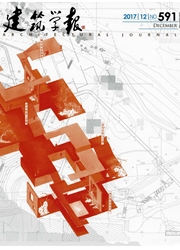

 中文摘要:
中文摘要:
通过对桑园围的水患及其治理的梳理,解析在这种治理中所形成的自治机制对传统水乡聚落的影响,从而得出以桑园围为代表的传统水乡聚落中,以宗族为基础的乡村自治是珠江三角洲地区形态形成与演变的内在机制,水患压力下的宗族生存与发展是促成乡村自治的首要因素,而乡村自治机制的完善进一步促进了水患的治理,同时也导致了具有岭南传统特色的水乡聚落形态的相似演变。桑园围内的松塘、村头、简村、烟桥四个村落所具有的不同形态特征正是在演变中适应不同自然环境和宗族繁衍的结果。
 英文摘要:
英文摘要:
With a review of the preventive measures of floods in Sanyuan Wei,this paper analyzes the impact of the clan-based autonomy as a result of flood prevention on the village in the Pearl River Delta.It argues that rural autonomy of this kind in waterside settlements as typified in Sanyuan Wei is the intrinsic mechanism of the formation and evolution of the settlements.The survival and development of the clan became the fundamental factors in the formation of rural autonomy,and the improvement of the mechanism promotes flood prevention in turn,resulting in the similarities of evolution of waterside settlements with traditional Lingnan characteristics.The different morphological characteristics of Songtang Village,Jiancun Village,Cuntou Village and Yanqiao Village in Sangyuan Wei are the outcome of adaptation to different natural environment and clan development.
 同期刊论文项目
同期刊论文项目
 同项目期刊论文
同项目期刊论文
 期刊信息
期刊信息
